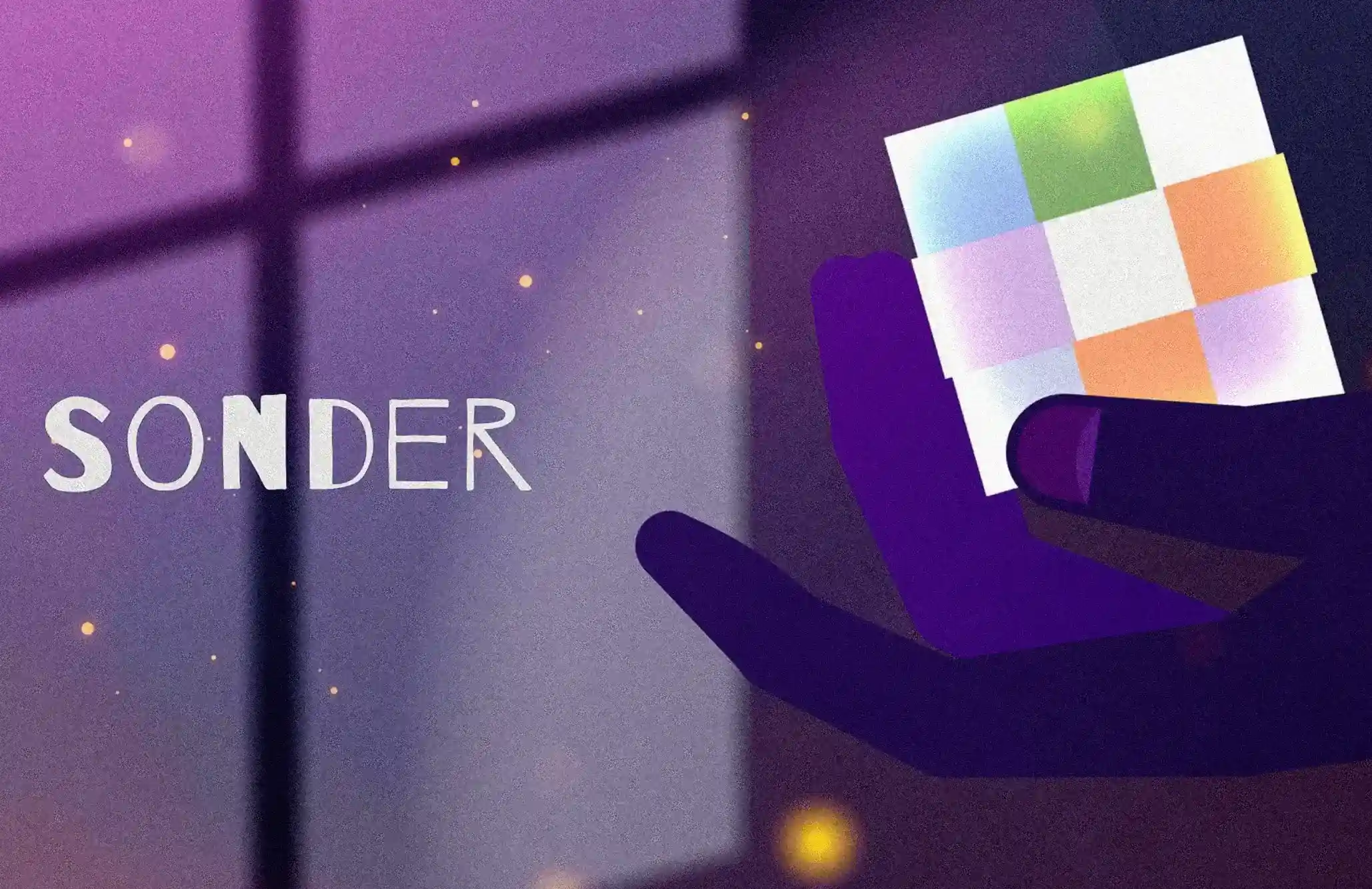Engraving Egypt

Engraving Egypt
This exhibition tells the story of The Description de l’Égypte, an Encyclopedia of the findings of Napoleon’s army during the French invasion of Egypt (1798–1801). It aims to show the sheer size of this massive, multi-volume illustrated book, the intricate technique of engraving, and the imperial underpinnings of The Description of Egypt.
++ special thanks to Kai & Martin for graciously lending us helping hands with CNC routing
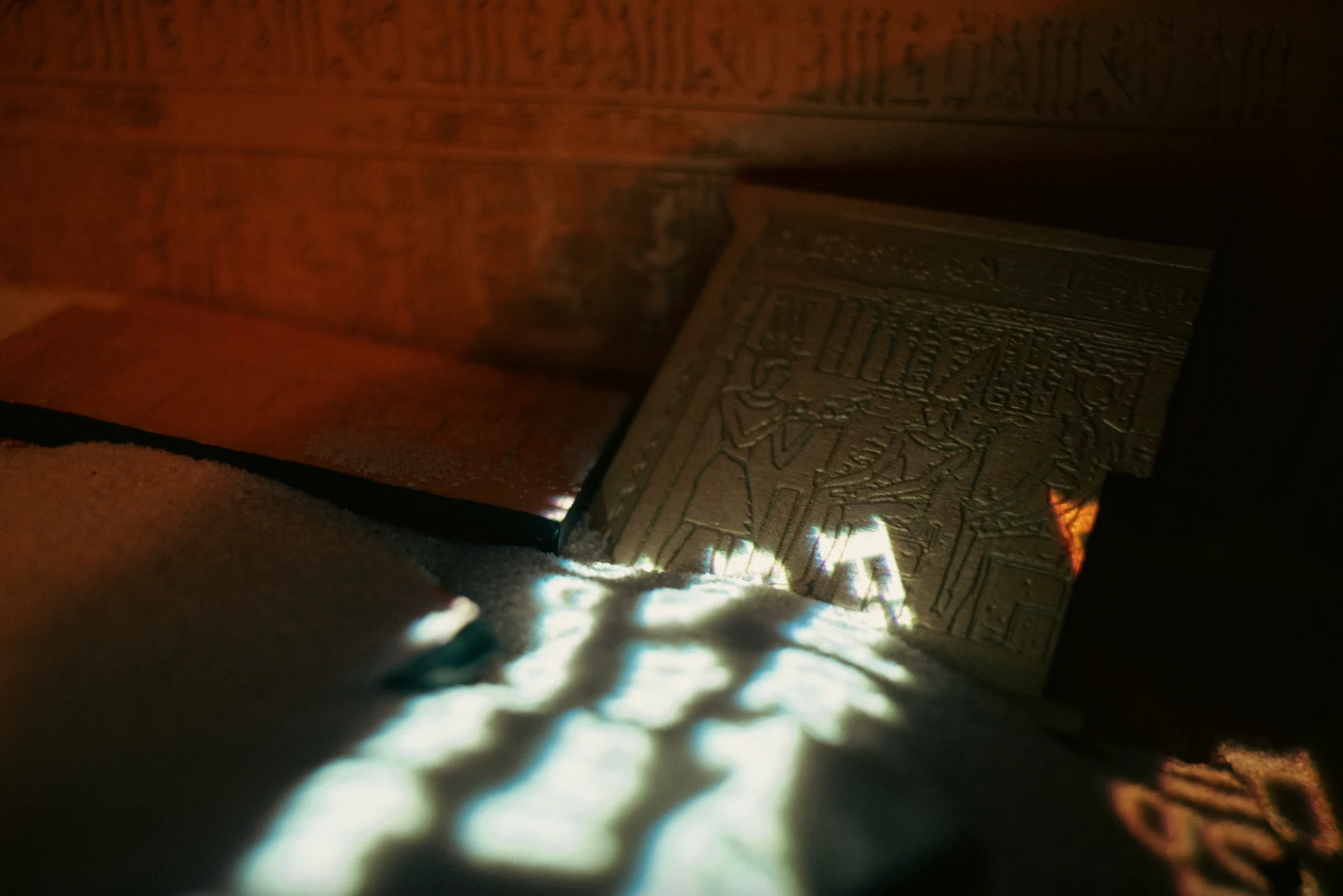
about & goals
• The publication exemplifies imperial narrative both in the political and intellectual realm.
• As the Description de l’Égypte continues to influence the study of ancient Egypt, we aim to raise awareness about its Orientalist underpinnings while also discrediting its objectivity as well as highlighting Egyptian art and the techniques of engraving.

tl;dr: This exhibition aims to show the sheer size of this massive, multi-volume illustrated book, the intricate technique of engraving, as well as the imperial underpinnings of The Description of Egypt.
%20(1)%20(3)%20(1).webp)
the experience
Click below ↓ to get quick overview of each elements:
Every interaction needs a hook. This is the interaction that greets you as you enter. Designed to entice attendees to learn an other heavily historical - at times stereotypically tedious - subjects
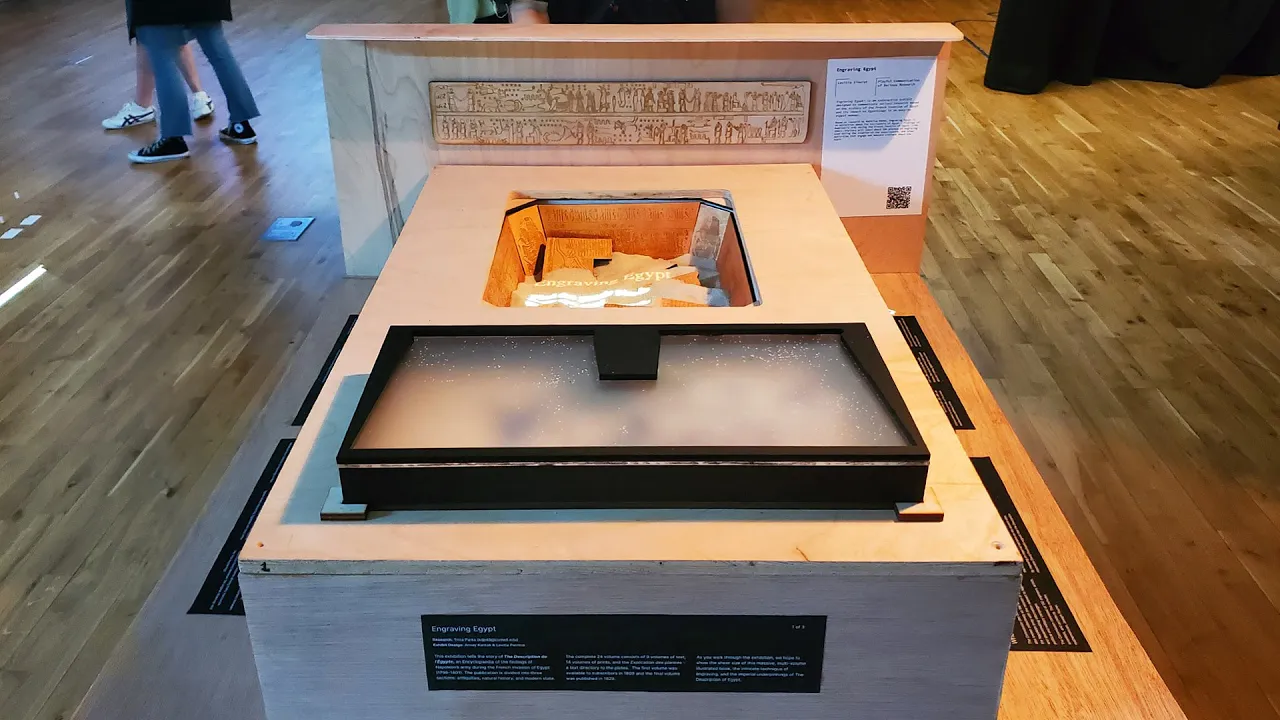
History is fascinating yet, it easily gets overwhelming. This interaction takes advantage of the rich visual artefacts of The Description de l’Égypte and turn it into an engaging game that helps with subject retention
.webp)
Bite-sized segments, curated to emphasize the distinctions between the original drawings and the reproduced engravings found in The Description of Egypt.
.webp)
Magic Puzzles
This first interactive feature is designed to engage and captivate visitors, drawing them into the broader themes of the exhibition. We aim for this puzzle experience to resemble a treasure hunt, reminiscent of an Indiana Jones adventure.
.webp)
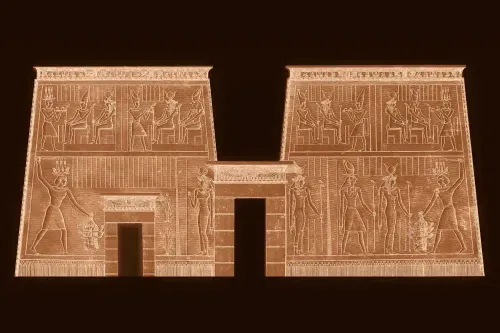
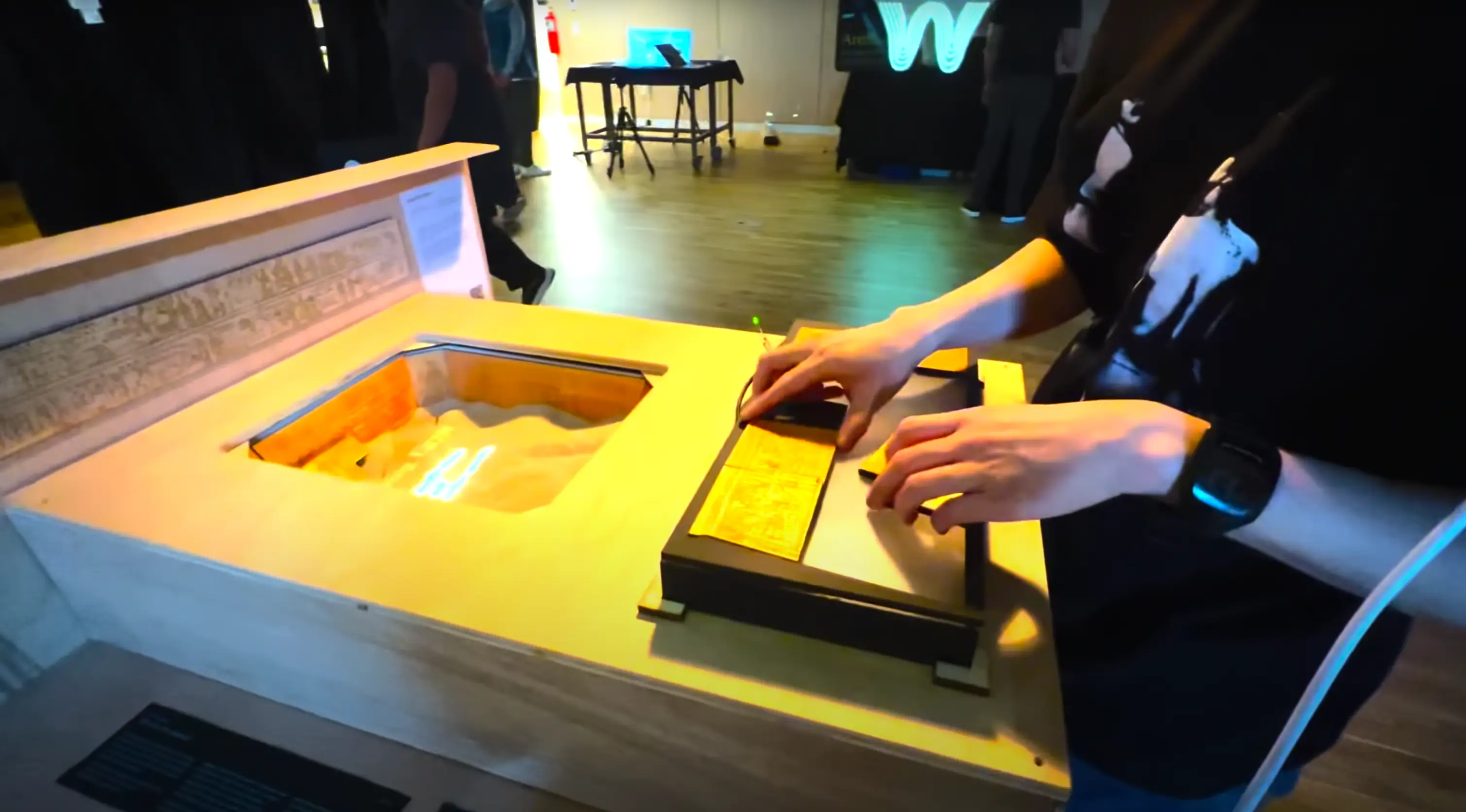
the technicality
behind
The completion of the puzzle triggers a sequence, started by an analog light sensor positioned at the base of the puzzle assembly area. When the sensor detects the specified light values - indicating the puzzle's completion - it prompts our Arduino to communicate with our sketch (through serial communication), subsequently unveiling the magic puzzle animation. The animation itself is taken from one of the engravings from the publication, turned into a vector file, which is then used as an output for the puzzle via p5.js.
🌱 initial challenges
Before landing on our chosen sensor, we had to tinker with different sensors from time of flight (ToF) sensor, ultrasonic sensor to force-sensitive resistors. During the many rounds of preliminary prototyping, we found that analog light sensor to be the most reliable. We only had one sensor on hand so we had to make sure to handle it delicately.
Upon inspecting the area we are given with, we also had to redesign our initial plan to better suit the space constraints. Despite these modifications, the revised design feels more efficient in its space utilization and aligned well with our student-friendly budget.
before
after
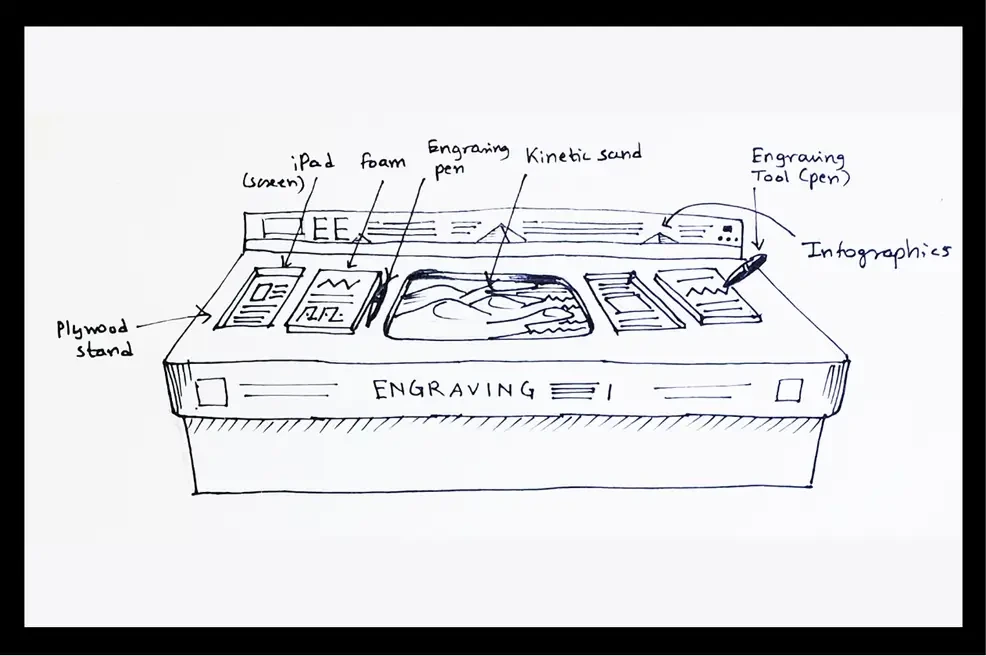
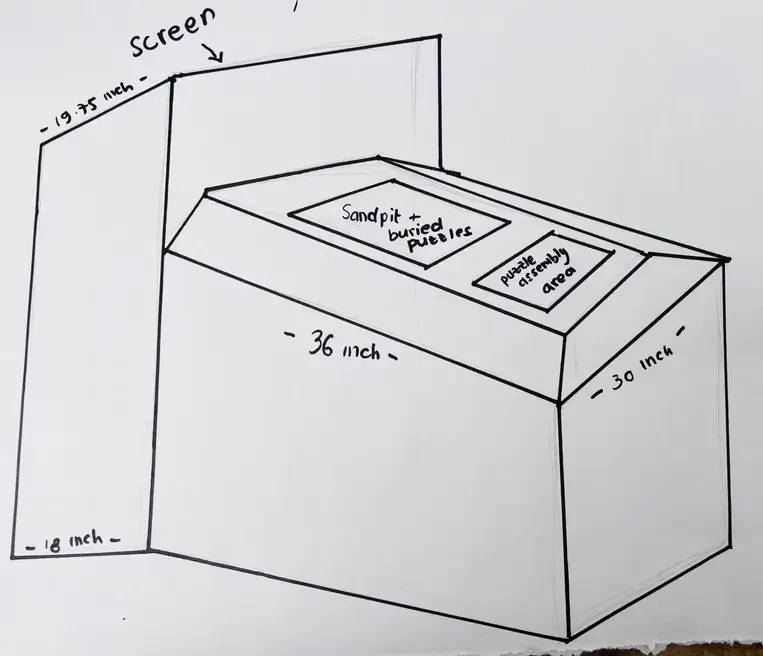
Memory Game
This game where pairs of face-down cards must be matched and given the visual-orientedness of the Encylopedia, all imageries on the cards are taken from The Description de l’Égypte. The goal of this interactive game is to highlight the research in ways that is engaging when learning about an otherwise heavily historical subject.
.webp)
...more peeking behind the scenes
This game was developed with JavaScript, CSS, and HTML, and image assets hosted on GitHub. We aimed to implement a scoreboard to introduce a competitive element allowing players to compare scores and compete against themselves, however, due to time constraints and the time-consuming nature of setting up the venue, this was not accomplished in time for the ITP Spring Show.
In fabricating the physical components of the exhibition, we mainly used solid wood, cut to specific dimensions. Certain elements were also shaped using CNC router to achieve the desired sizes and forms. The puzzle assembly area is comprised of lasercut acrylic sheets, which was then hand-painted with acrylic paint.
.webp)
.webp)
.webp)
Infographics
Aside from contextual printed information, positioned on the side of the main exhibition, supplementary infographics (slides) were initially designed to be printed, emulating the displays found in real-life museum exhibitions. However, considering the available space, a timed slideshow proved to be more suitable. The information is presented in bite-sized segments, emphasizing the distinctions between the original drawings and the reproduced engravings found in The Description of Egypt.
Retrospective:
.webp)
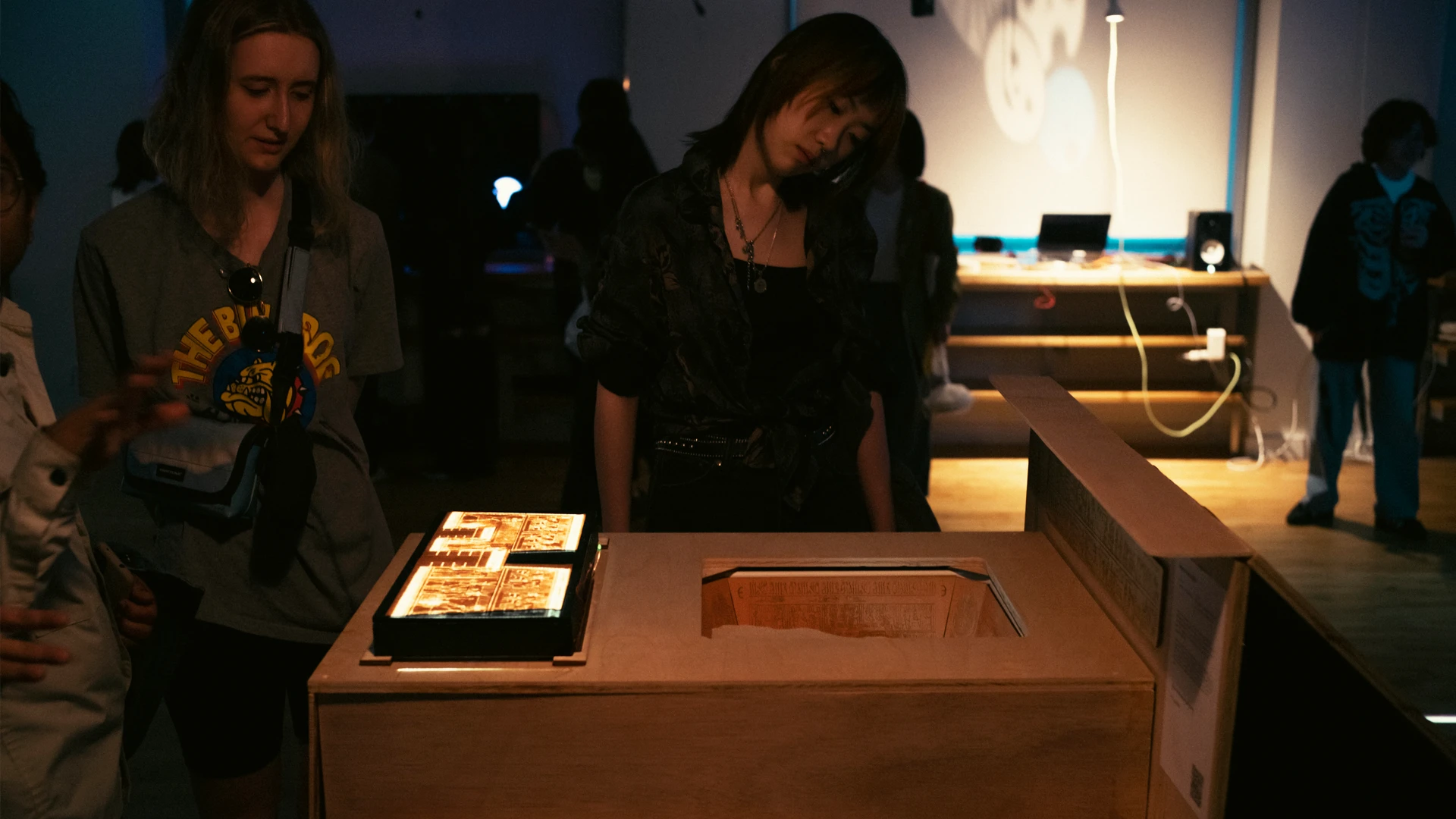
%20(1).webp)

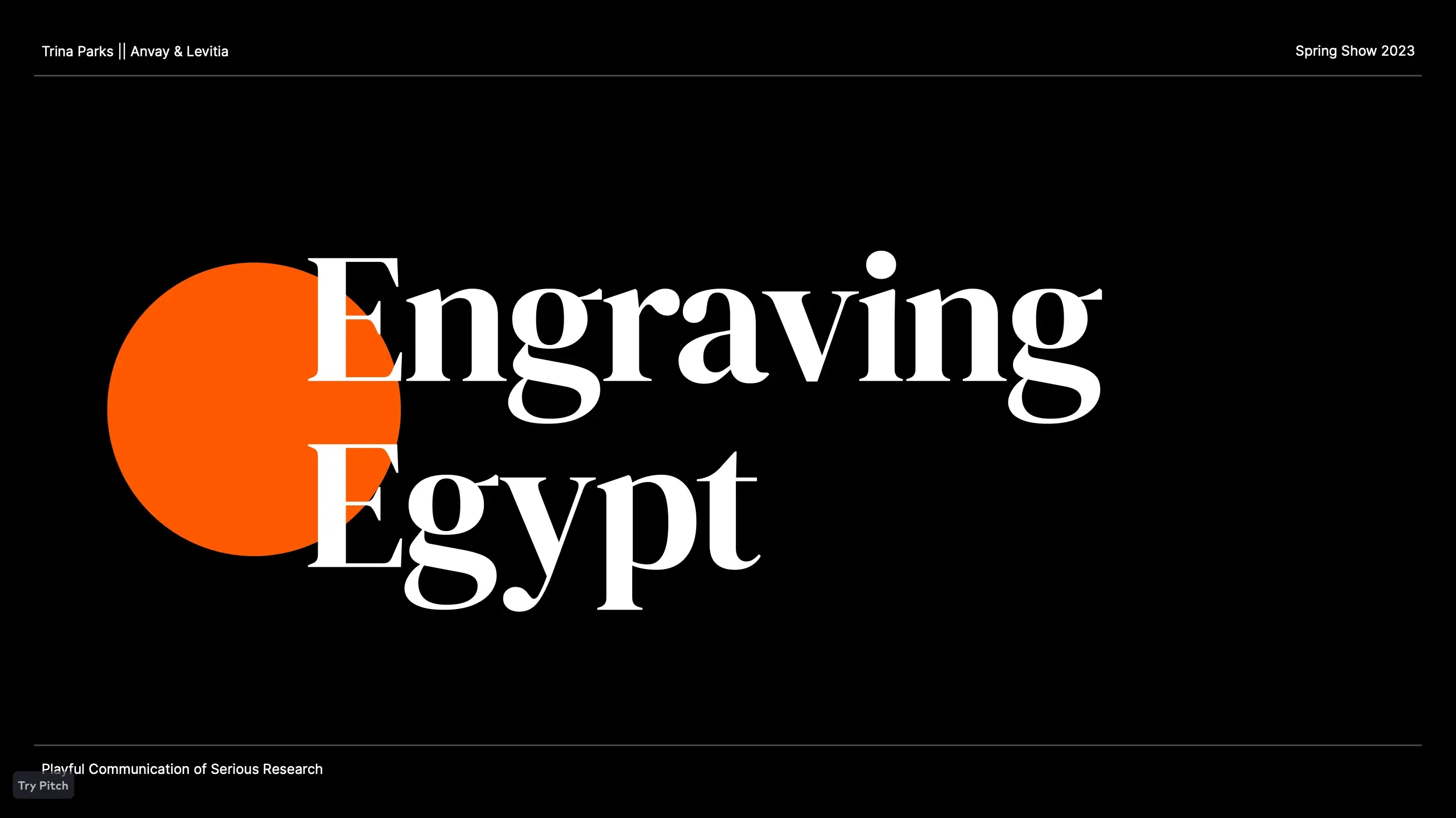

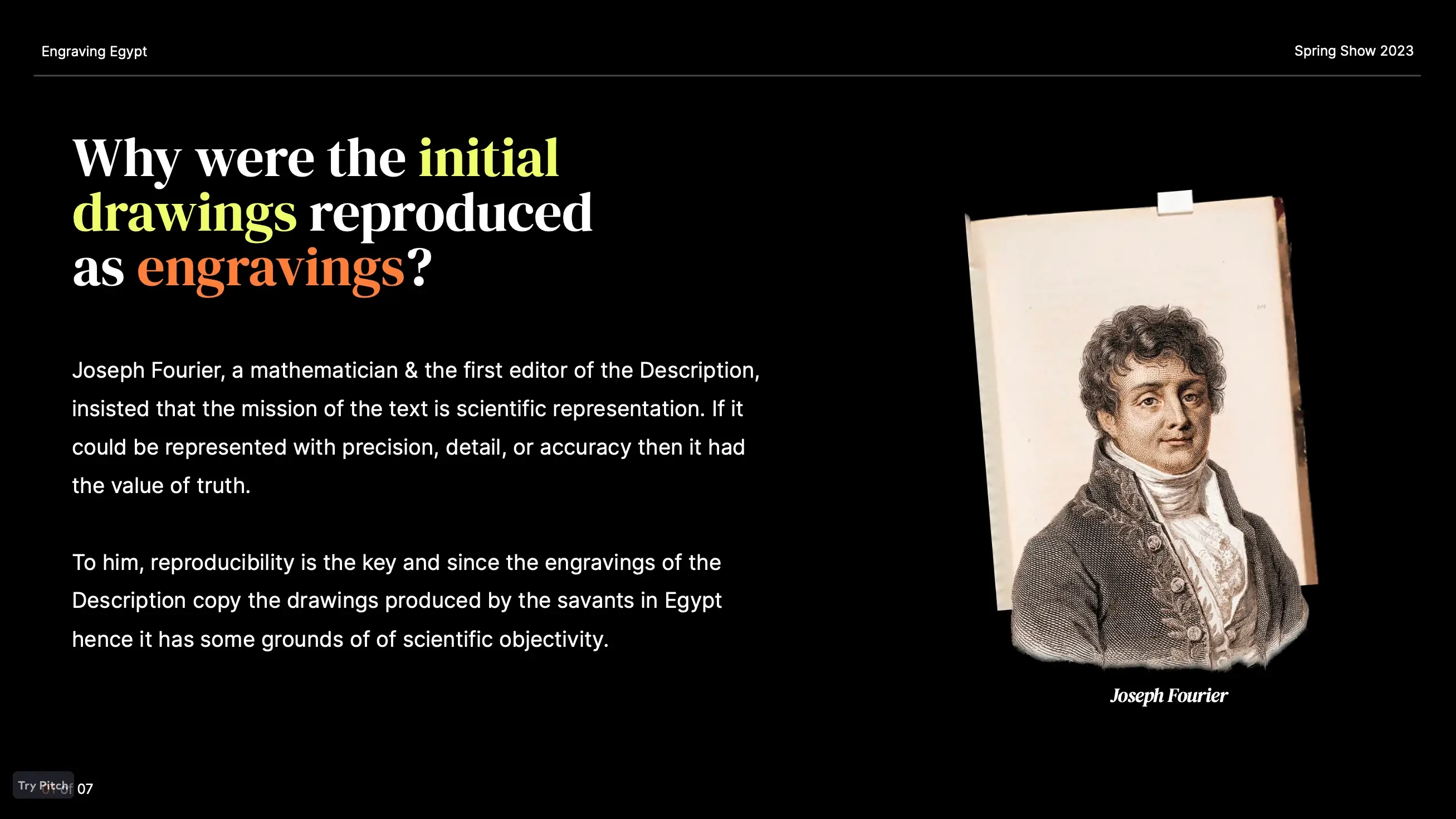
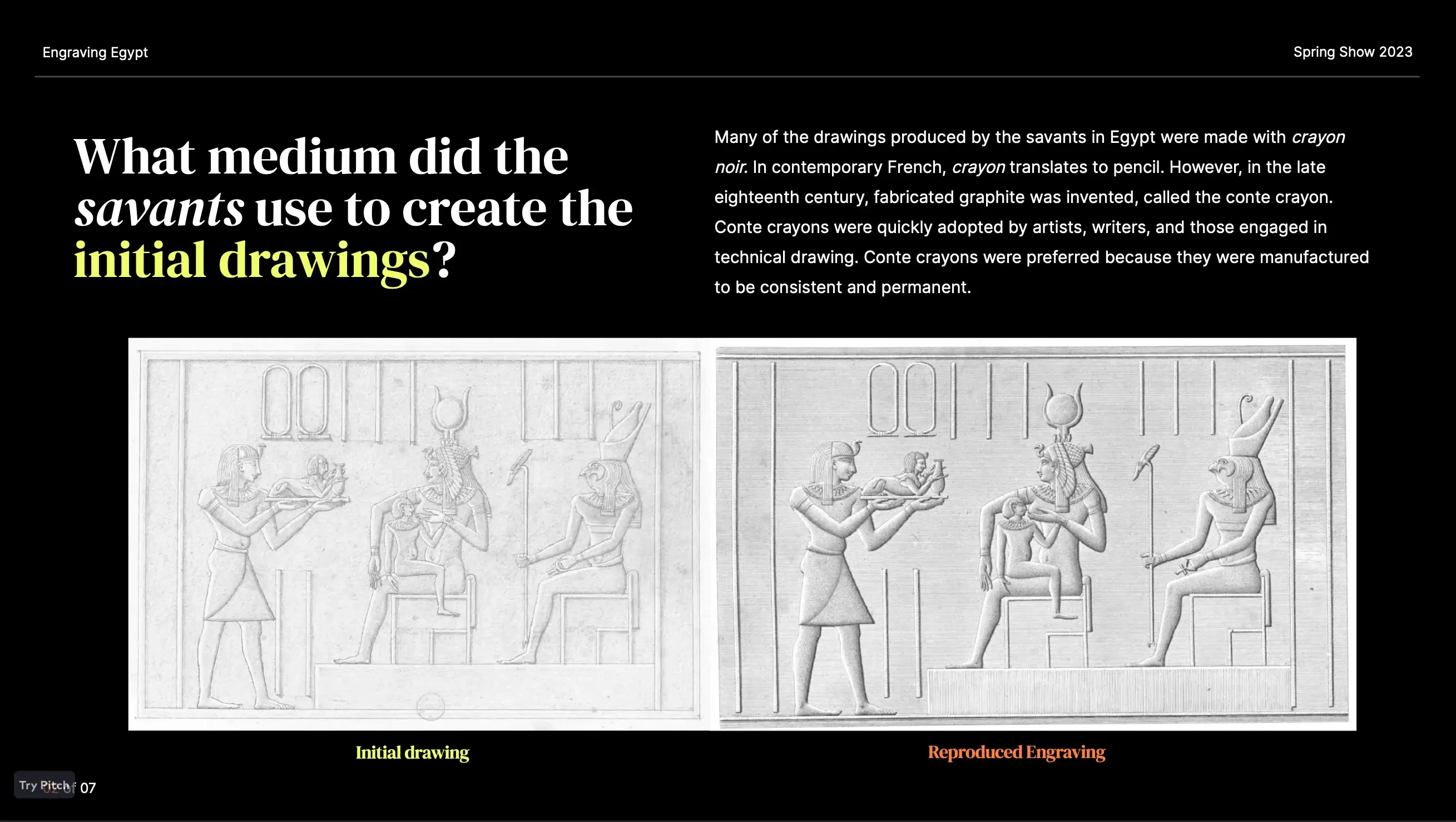
.webp)
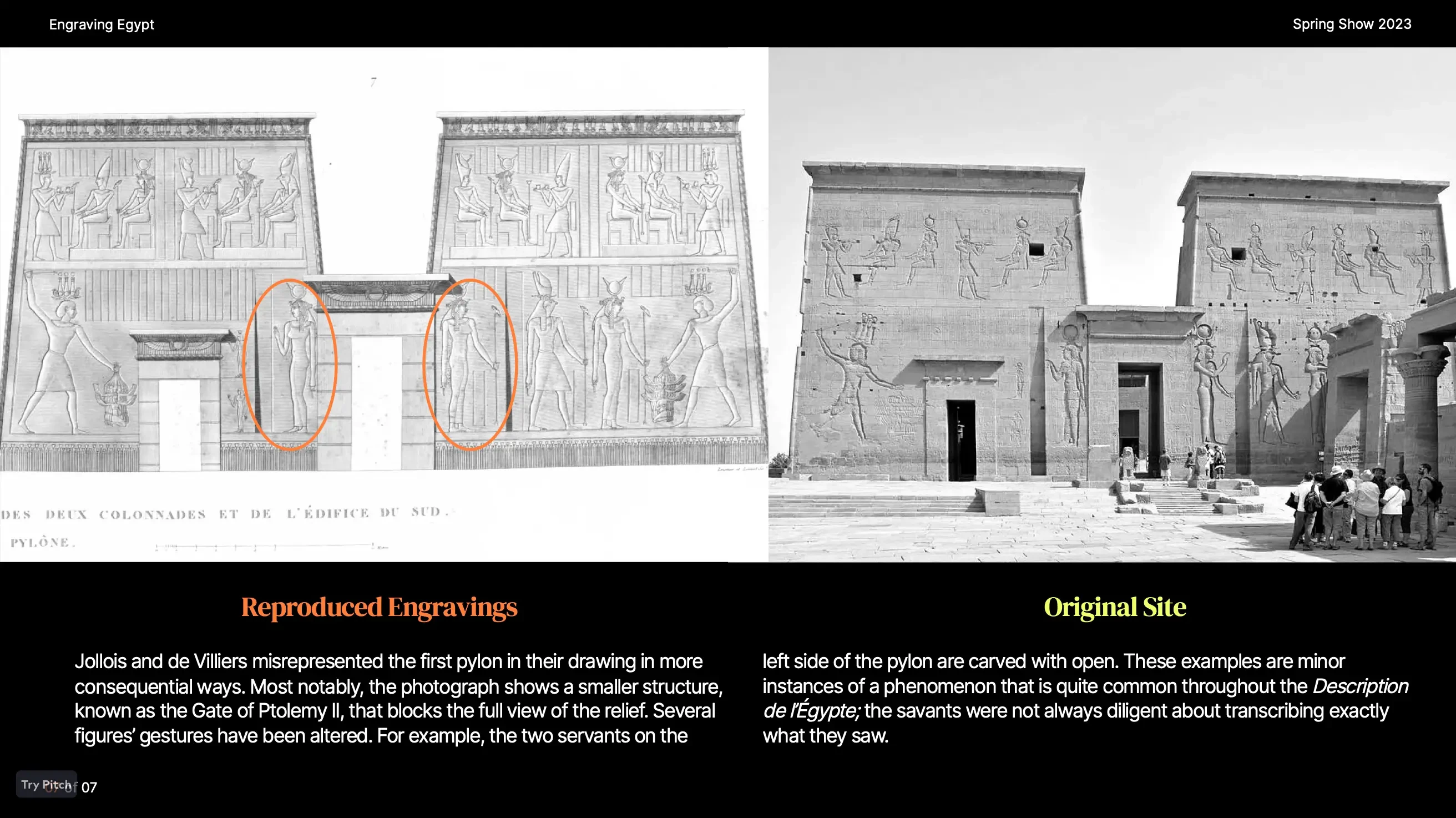
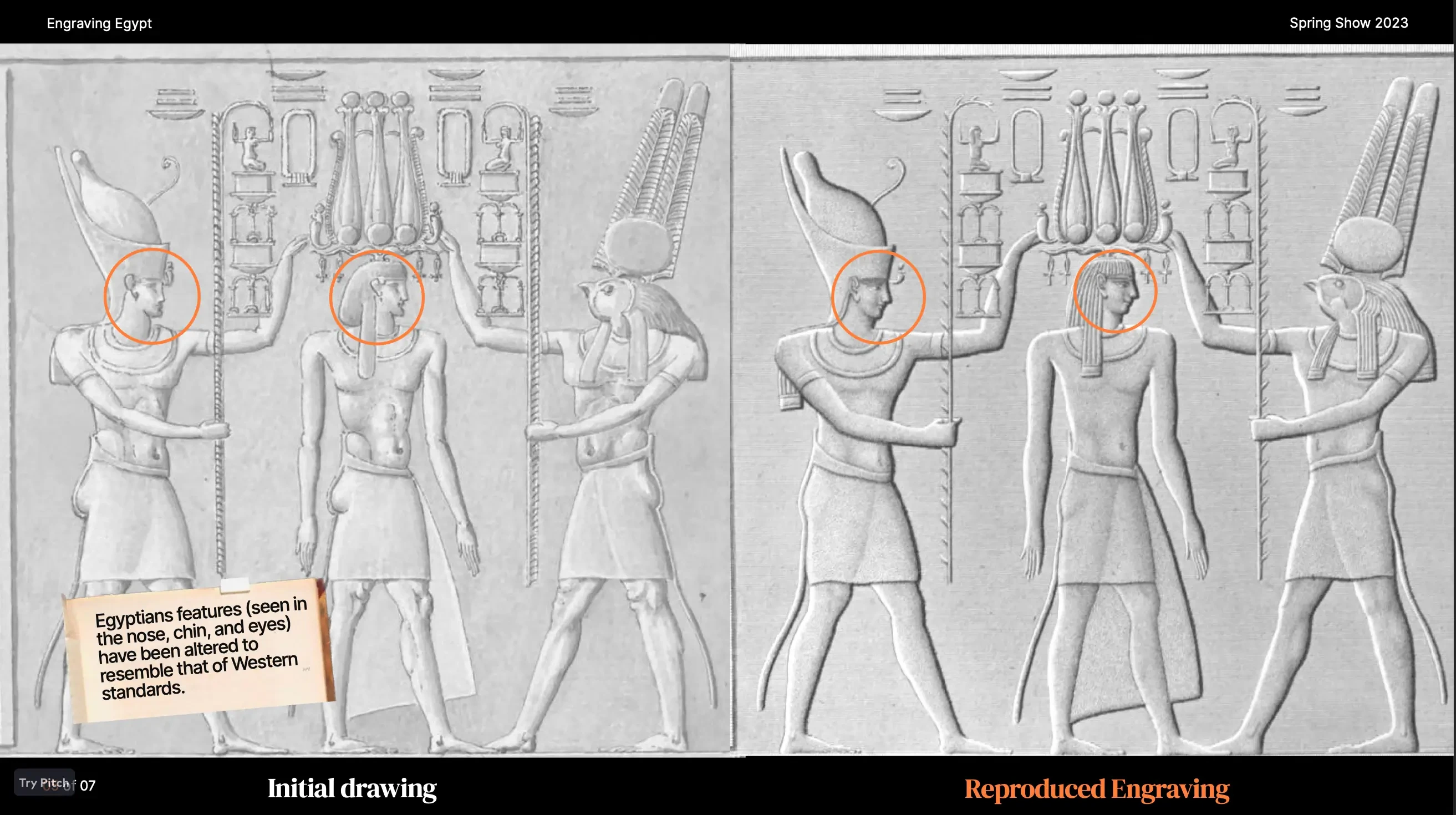

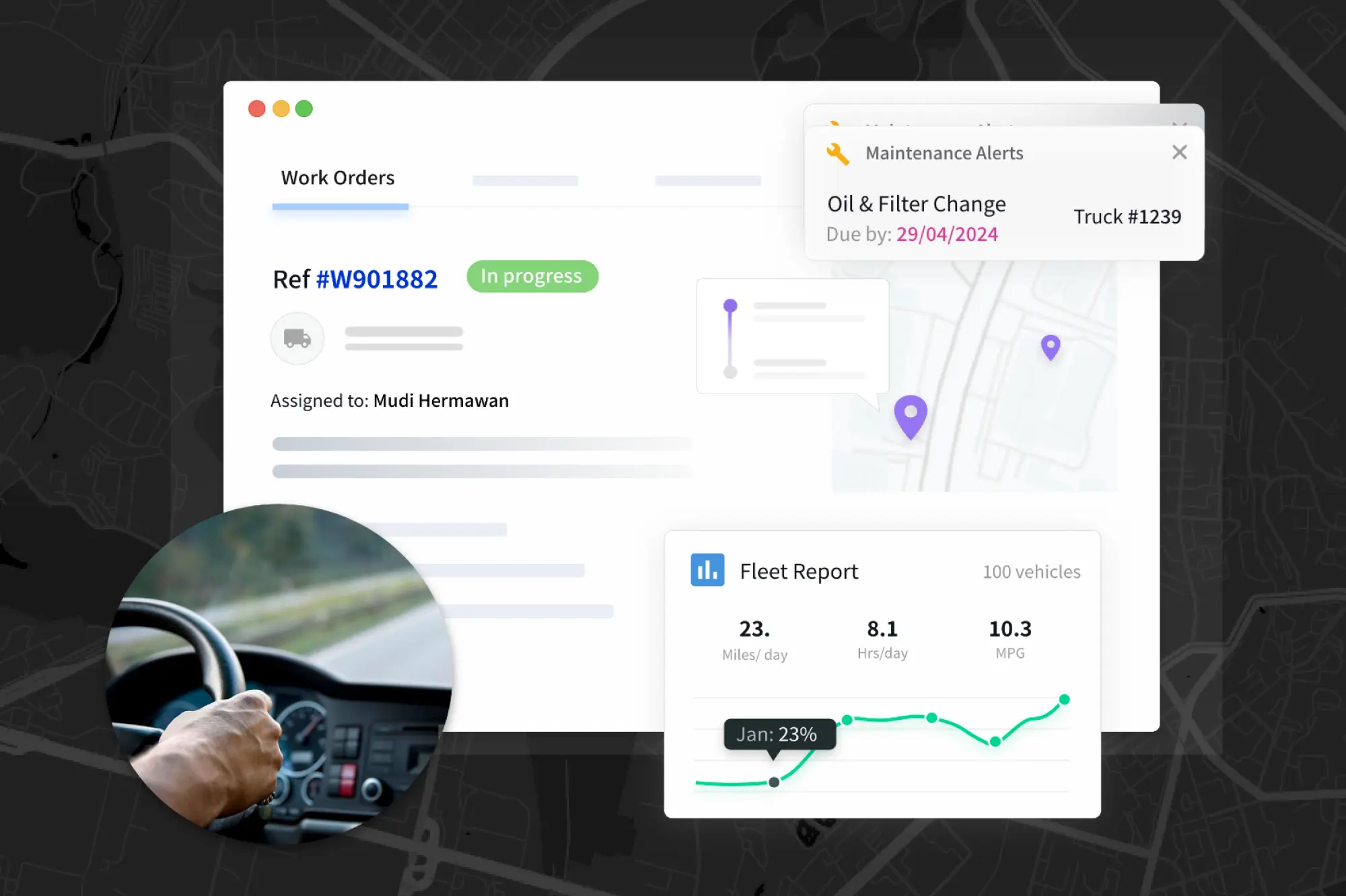
.webp)

.webp)
.webp)

